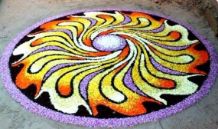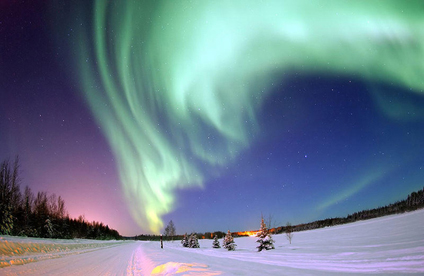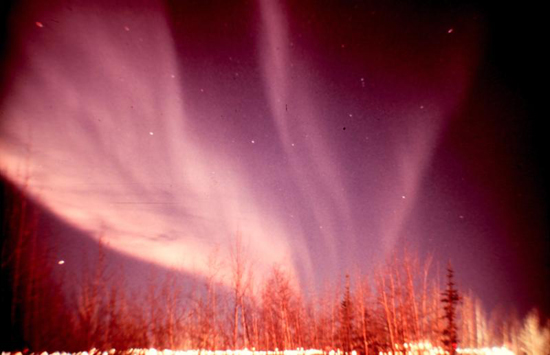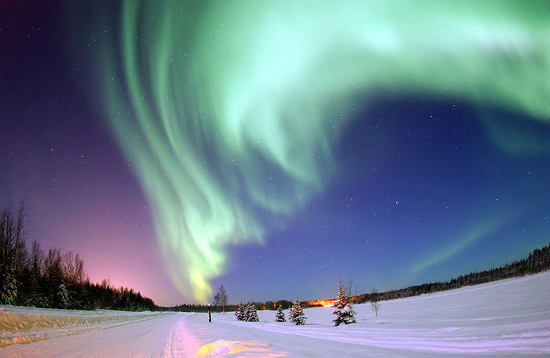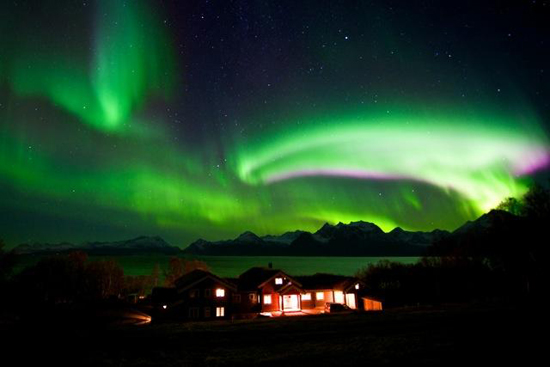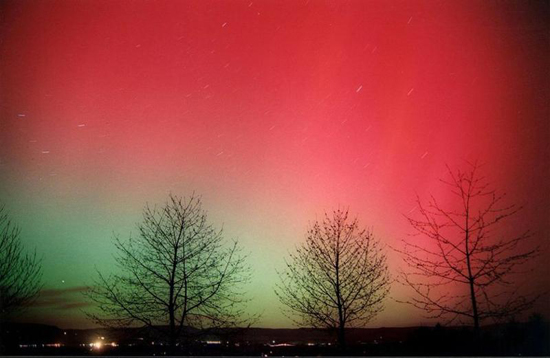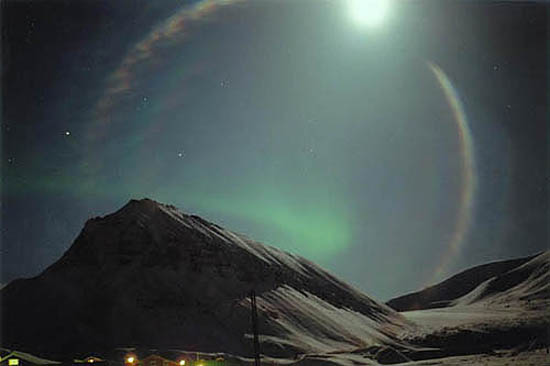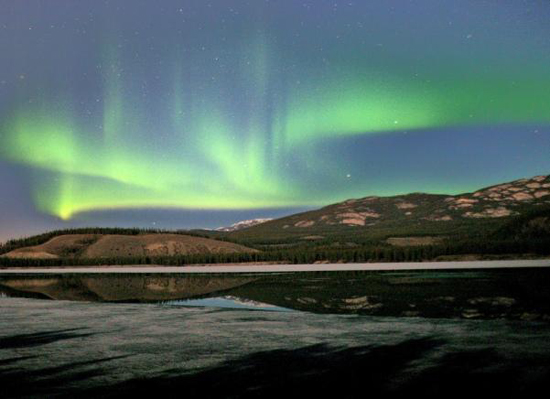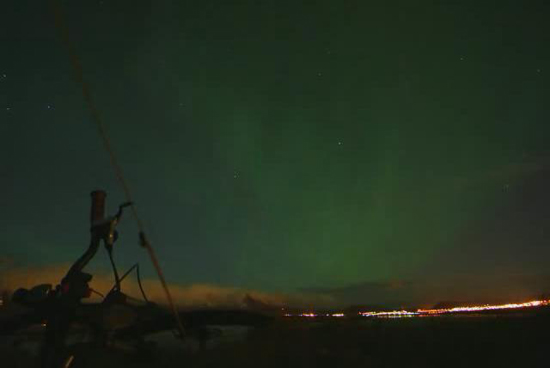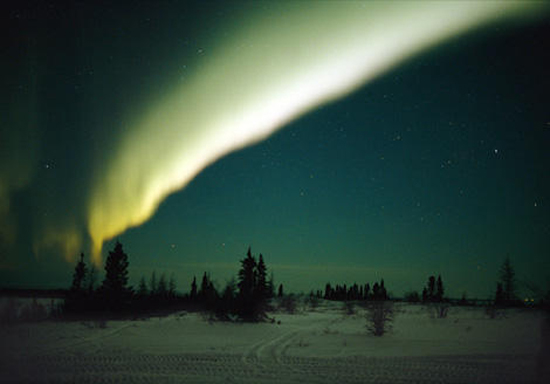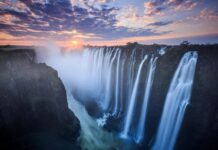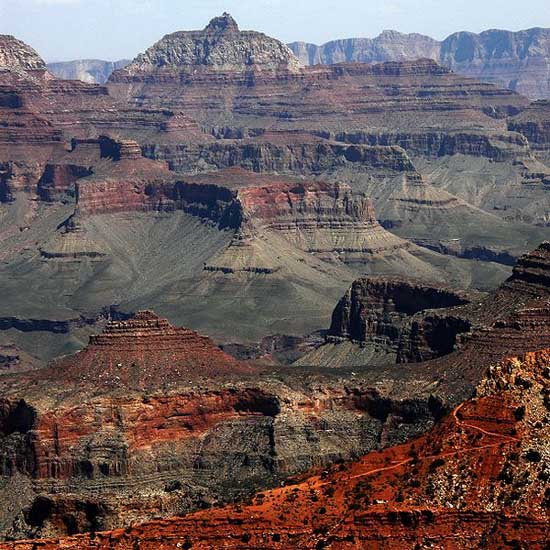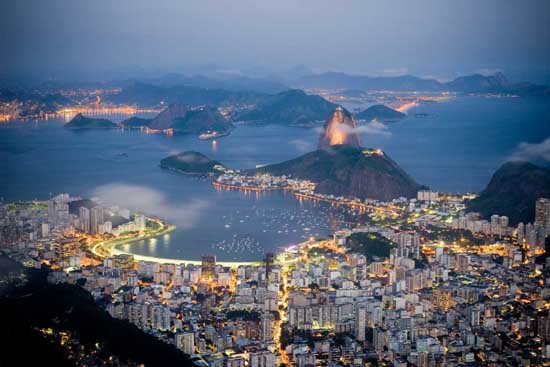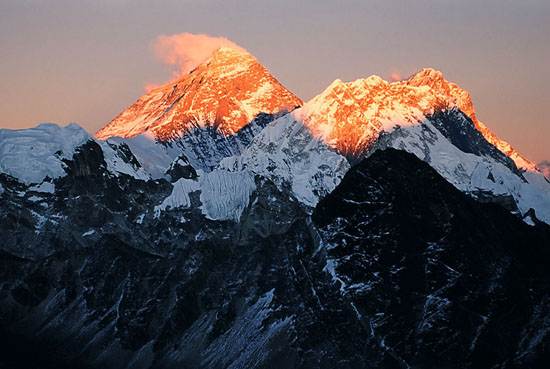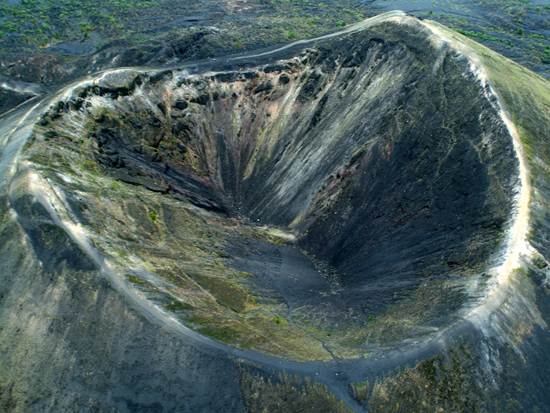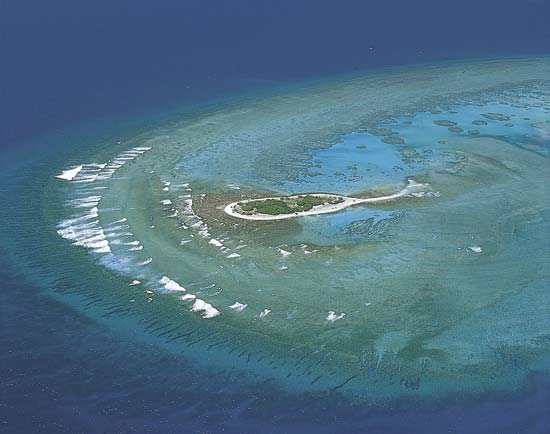Traveling to where An aurora is.It is a natural beautiful colorful light display mostly plural in the sky, particularly in the polar regions(Northern and Southern Lights).
This traveling site is near the north pole they are called the aurora borealis or northern lights. Near the south pole they are called the aurora australis or southern lights.
Appear to be reddish or greenish swaths appearing across the dark night sky, but can also be different shades of blue and yellow. The colors of northern lights correspond to the different gases in the ionosphere. In northern lights, oxygen atoms give off red and green light, depending on how high they are in the ionosphere. Nitrogen molecules give off blue and violet light.
Simply are caused by interactions between Earth’s upper atmosphere and charged particles from the Sun. The Aurora is like the weather, a result of space weather.
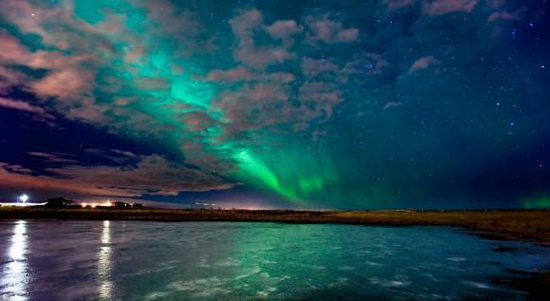
The aurora was named after the Roman goddess of dawn, and was thought to be produced by sunlight reflected from polar snow and ice.

Auroras is viewed at night and occur more often around Polar Regions, usually within the Artic and Antarctic Circles,may be found in other parts of the world.
Auroras don’t just occur on Earth. Any planet with a magnetic field as Jupiter, Neptune, Uranus, and Saturn.
We can see the Northern Lights every other clear night, associate with wintertime, although in reality they are present the year round; they occur on the night side of the Earth and they commonly appear in the early evening and continue late into the night.
The lights are at their most frequent in late autumn and winter/early spring. December to March when nights are longest and the sky darkest.

The aurora is most active late at night or early in the morning, when the sky is clear and the air chilly. One of the best times to look for the Northern Lights will be when it is very dark because of a new moon. Avoid the full moon and places with a lot of light.
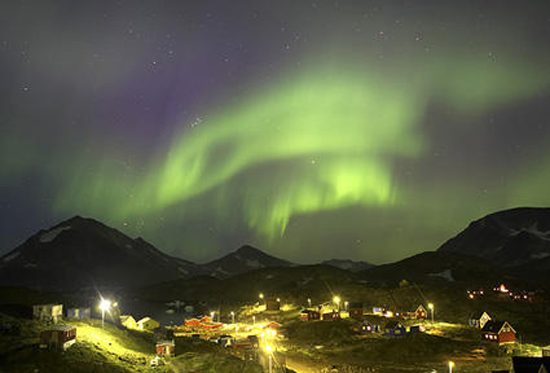
No other place on earth can be traveling to stands better chances of spotting the lights as in Northern Norway.
From southern Norway, sightings would be only a few times a month Norway we are restricted to the period starting at the beginning of September and extending until the middle of April.
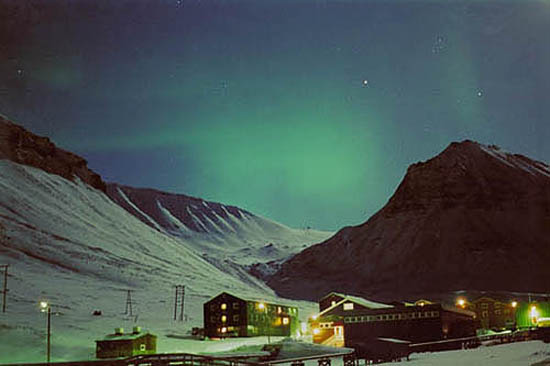
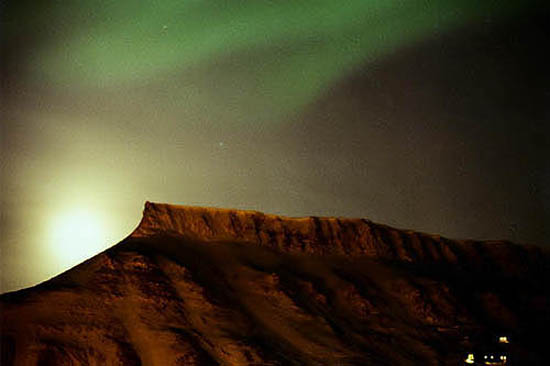 While in central Europe, sightings would be hardly more than a few times a year,and they have even been seen from the Mediterranean but only a few times each century,to the north of the auroral zone, on Spitzbergen (Spitsbergen is a Norwegian island far north in the Arctic Ocean, part of the Svalbard archipelago.).
While in central Europe, sightings would be hardly more than a few times a year,and they have even been seen from the Mediterranean but only a few times each century,to the north of the auroral zone, on Spitzbergen (Spitsbergen is a Norwegian island far north in the Arctic Ocean, part of the Svalbard archipelago.).

The Northern Lights are a common sight, although they don’t appear as often as in northern Norway.
Hotels in the region:
Check availability, maps, photos and reviews before traveling, and book at the guaranteed lowest price.











